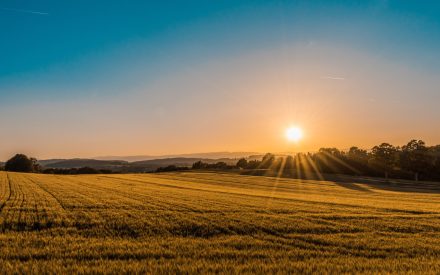In this 2013 podcast, Phil Harris, UW-Extension Farm Law Specialist at UW-Madison College of Agricultural and Life Sciences discusses livestock owners’ responsibility for fencing.
Transcript
Sevie Kenyon: Phil, if I own livestock, what are my responsibilities for fencing?
Phil Harris: In Wisconsin, a livestock owner has a duty to keep his or her livestock fenced in. And what that’s going to mean is that they have to have a fence that is reasonably maintained so that under normal circumstances cattle or other livestock can’t escape through that fence.
Sevie Kenyon: And can you perhaps describe for us what a legal fence looks like?
Phil Harris: There’s several different fences that are treated as legal fences under Wisconsin statutes. For example, a woven wire fence that has a woven wire three feet high with three barbed wires above it on posts that are set not more than one rod apart is one of the definitions of a legal fence.
Sevie Kenyon: And Phil if I have a neighbor, what’s my relationship with him and his fence?
Phil Harris: Wisconsin law requires adjoining landowners to each maintain one half of the fence on their common property line. Often called the ‘right hand rule,’ they each take care of the right half of the fence, that is, as they’re standing in the middle of the fence facing each other, each on their own land facing each other, they each maintain the right hand half of that fence.
Sevie Kenyon: Phil, who determines whether you’ve maintained your fences?
Phil Harris: Wisconsin statutes designate fence viewers as the judge of whether or not a fence meets the legal standards. And fence viewers are further defined as members of the town board.
Sevie Kenyon: Phil, we have dairy farmers pasturing cattle. Do they have any special considerations for electric fences?
Phil Harris: The Wisconsin statutes allow an electric fence on the property line if the adjoining landowners agree to have an electric fence as the legal fence to have between those two pieces of property. So without that agreement, either of those landowners could veto the use of an electric fence.
Sevie Kenyon: And Phil, if I own livestock and my neighbors don’t, are they still required to keep up fences?
Phil Harris: Yes, if either side of the boundary line is farmed, each of the landowners is responsible for maintaining one half of the fences on that boundary line. If one side is entirely recreational and the other side is livestock, even the recreational owner is required to maintain one half of the fence.
Sevie Kenyon: What are some of the consequences of cattle getting loose?
Phil Harris: If the cattle owner maintained legal fences- so checked them regularly and kept them in condition- and then something unusual happened to scare the cattle and they bolted and ran through the fence, then the damage caused by those cattle would not be a liability of the cattle owner.
Sevie Kenyon: We’ve been visiting with Phil Harris, Department of Agricultural and Applied Economics, University of Wisconsin-Extension in the College of Agricultural and Life Sciences, and I’m Sevie Kenyon.

 Terminating a farmland lease or tenancy
Terminating a farmland lease or tenancy Negotiating the Farmland Lease
Negotiating the Farmland Lease Is my Wisconsin farm lease enforceable?
Is my Wisconsin farm lease enforceable? ▶ Watch: Negotiating Agriculture Leases
▶ Watch: Negotiating Agriculture Leases


